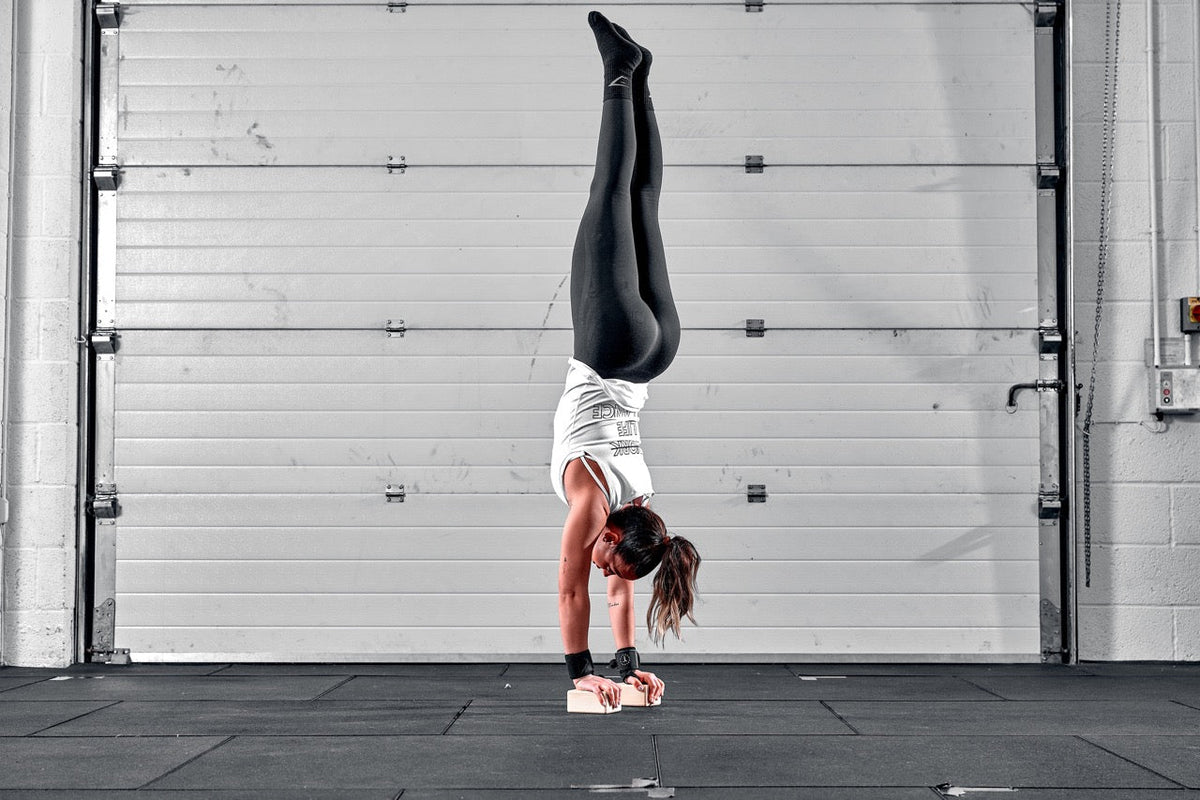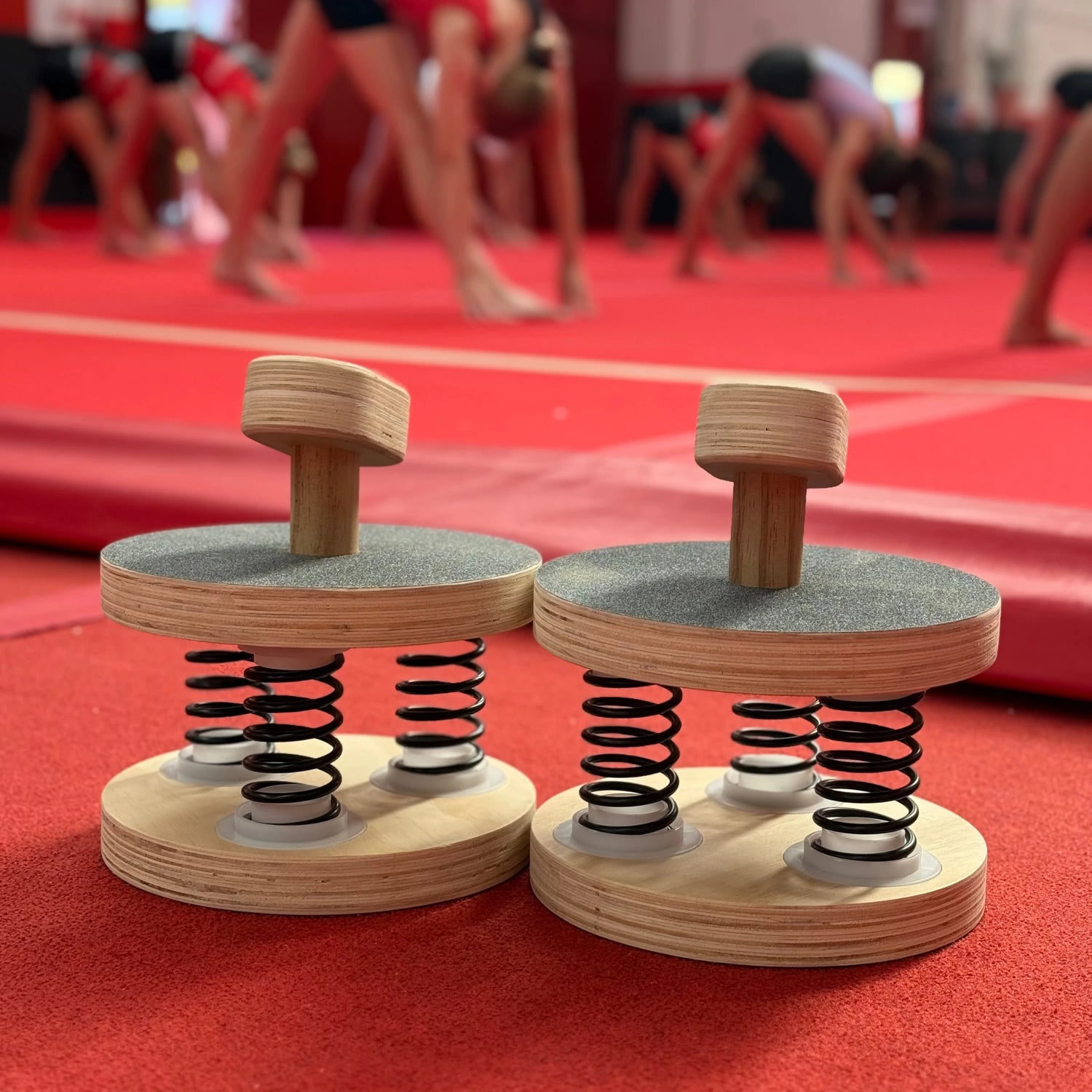
Handstand Yoga: The Ultimate How-To Guide for Beginners
|
|
Time to read 5 min

Check out our exciting new balance product launches. Developed and tested by...
|
|
Time to read 5 min
Practicing a handstand in yoga, known as Adho Mukha Vrksasana, can be a transformative experience that strengthens your entire body, improves balance, and provides a new perspective on your yoga practice.
This complete guide will walk you through the process of mastering the yoga handstand, offering tips and techniques to help you achieve this challenging handstand yoga pose with confidence and proper alignment.
Starting with the benefits of handstand yoga, we will share with you everything you will need to get started for the first time, taking you through the correct warm ups and then on to various progressions and all of the safety measures you can take to avoid injury.
Handstand yoga is more than just a fun trick; it offers numerous benefits for your whole body and mind.
Mastering this difficult yoga skill is a great way to build your confidence whilst strengthening a vast range of muscles throughout your entire body
As any handstand practitioner will tell you, handstand yoga is a journey and while that might sound like a bold statement now, we are confident you will feel the same way once you get started with your handstand yoga practice.
Strengthens Upper Body: Engages upper arms, shoulder muscles, and upper back.
Enhances Core Stability: Activates rectus abdominis, external obliques, and hip flexors.
Improves Balance: Develops coordination and mental clarity.
Increases Blood Flow: Promotes blood circulation and can help with mild depression.
Boosts Confidence: Overcoming the fear of falling and mastering the pose can enhance self-confidence and break you out of your comfort zone.
Before attempting a full handstand pose, it's crucial to prepare your body with proper warm-ups and foundational poses to build the necessary strength and flexibility.
You may also want to take a look at our article on handstand muscles to give you a solid understanding of which muscles are engaged and how you can develop them further.
Downward-Facing Dog (Adho Mukha Svanasana)
A great pose to warm up the shoulders, hamstrings, and calves.
Focus on pressing your hands into the yoga mat and lifting your hips towards the ceiling.
Mountain Pose (Tadasana)
Practice Tadasana to establish a strong, stable foundation.
Engage your thighs, lift your kneecaps, and lengthen your spine.
Chair Pose (Utkatasana)
Strengthens the thighs, core, and shoulders.
Keep your arms straight and reach up while sitting back into an imaginary chair.
Side Plank (Vasisthasana)
Builds shoulder strength and stability.
Hold each side for 30 seconds, focusing on keeping a straight line from head to heels.
Boat Pose (Navasana)
Engages the core muscles, including rectus abdominis and external obliques.
Maintain a balanced position, lifting your chest and extending your legs.
To support your body weight in a handstand, you need strong and flexible shoulders.
Shoulder Stretches: Use a yoga strap to gently pull your arms behind your back, improving shoulder flexibility.
Strengthening Exercises: Incorporate push-ups and planks into your routine to build upper body strength.
Using a wall is the best way to start your handstand practice.
Start in Downward-Facing Dog: Place your hands shoulder-width apart on the mat, feet against the wall.
Walk Your Feet Up the Wall: Gradually walk your feet up, moving your hands closer to the wall until your body forms an L-shape.
Kick Up to Handstand: Shift your weight into your hands and kick one leg up, followed by the other. Engage your core and find balance.
Maintaining proper alignment is crucial for a successful handstand.
Hands: Place them shoulder-width apart, with middle fingers pointing forward.
Shoulders: Press down through your hands and lift your shoulder blades towards your ears.
Core: Engage your abdominal muscles to keep your body in a straight line.
Legs: Keep your legs straight and squeeze your inner thighs together.
Balancing poses help develop the stability needed for a handstand.
Warrior III (Virabhadrasana III): Balances on one leg, strengthening the standing leg and core.
Standing Balances: Practice Tree Pose (Vrksasana) and Eagle Pose (Garudasana) to improve overall balance and coordination.
Fear of falling is a common barrier for beginners. To overcome this:
Practice with a Spotter: A yoga instructor or partner can provide support and guidance.
Use Props: Place yoga blocks or a chair near the wall for added security.
Tight shoulders can limit your ability to hold a handstand.
Regular Stretching: Incorporate shoulder stretches and poses like Urdhva Dhanurasana (Upward Bow Pose) to improve flexibility.
Warm Compresses: Use warm towels to relax tight shoulder muscles before practice.
A strong core is essential for maintaining balance in a handstand.
Core Exercises: Add plank variations, boat pose, and side plank to your routine.
Consistent Practice: Regularly practice engaging your core in various poses to build strength.
Once comfortable with wall-supported handstands, try balancing in the middle of the room.
Spotter Assistance: Have a partner spot you to prevent falls.
Soft Surface: Practice on a cushioned surface to reduce impact from falls.
Adding variations can make handstand practice more enjoyable.
Straddle Handstand: Start with legs apart, then bring them together once balanced.
Handstand Walks: Once stable, try taking small steps on your hands.
Here are a few tips to progress your handstand yoga, whether you’re a complete beginner or seasoned handstand yoga enthusiast.
Modified Handstands: Use a wall or props to support your practice.
Gentle Poses: Focus on building strength and flexibility with beginner-friendly poses.
Handstand Variations: Explore different handstand variations to challenge your balance and strength.
Longer Holds: Work on holding your handstand for longer periods of time to build endurance.
High Blood Pressure: Consult with a doctor before attempting handstands.
Pregnancy: Modify poses as needed and avoid inversions unless experienced and comfortable.
Avoid Overstraining: If you feel pain or discomfort, stop and rest.
Progress Gradually: Increase intensity and duration of practice slowly to prevent injuries.
Always warm up with poses like Downward-Facing Dog and Shoulder Stretches to prepare your body for the demands of a handstand.
Handstand yoga, or Adho Mukha Vrksasana, is a rewarding and invigorating pose that can transform your yoga practice. By focusing on proper alignment, building shoulder and core strength, and overcoming common challenges, you can master this impressive balancing pose.
Remember, the journey to a successful handstand requires patience, perseverance, and consistent practice. With the right approach and mindset, you'll not only achieve a perfect handstand yoga pose but also gain a new perspective on your yoga practice and areas of life as a whole.
If you would like to work with an online handstand yoga coach, please do reach out to us via social media or email and we can put you in touch with some truly fantastic handstand practitioners.



